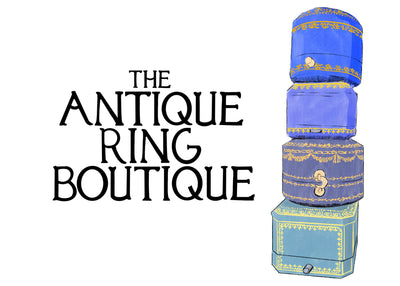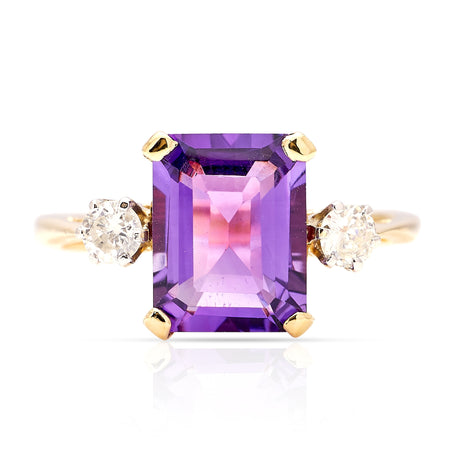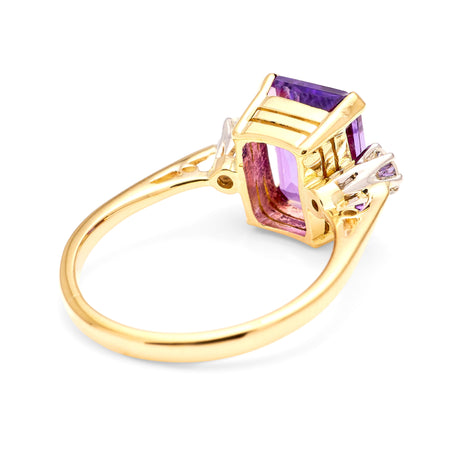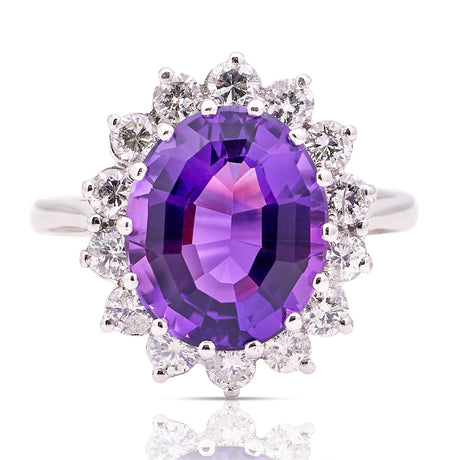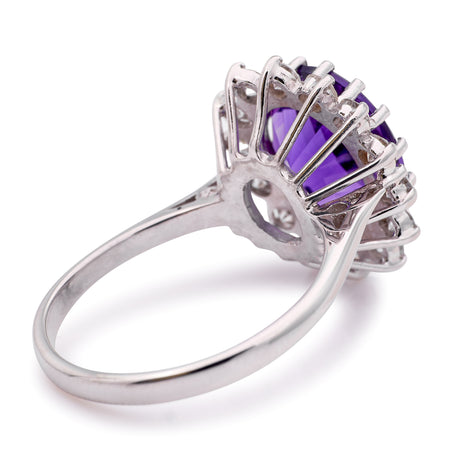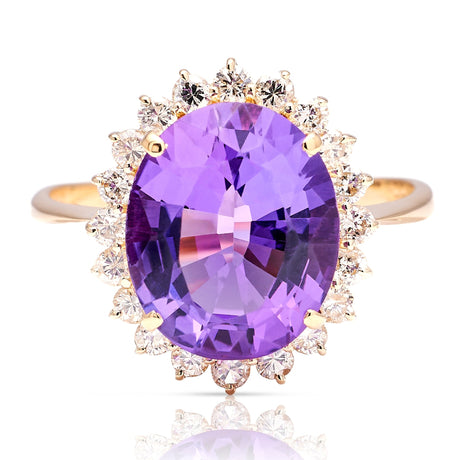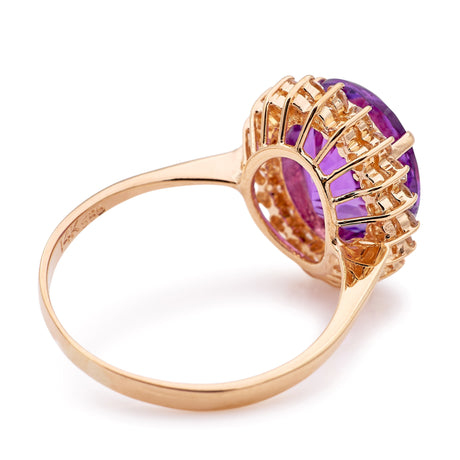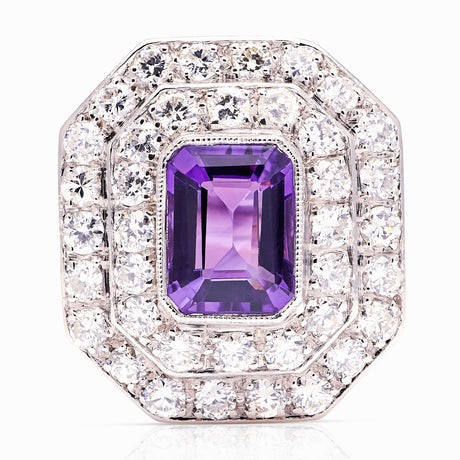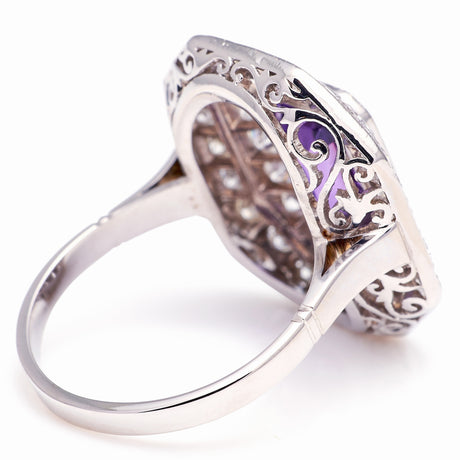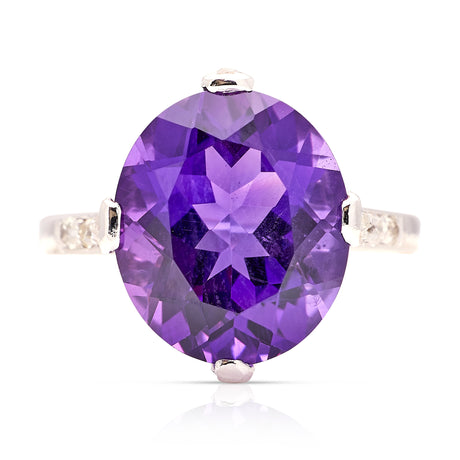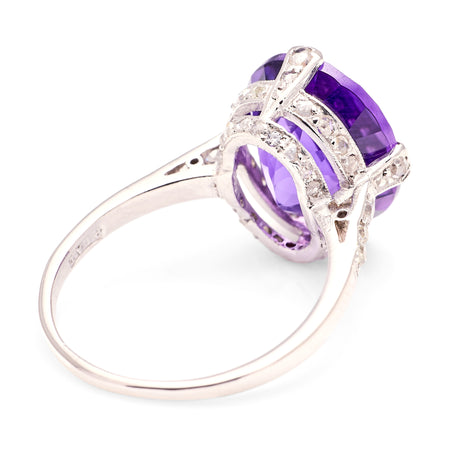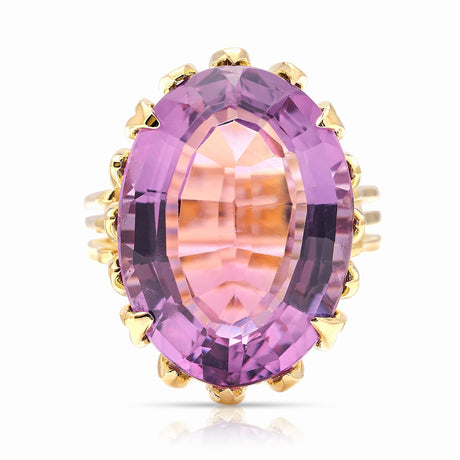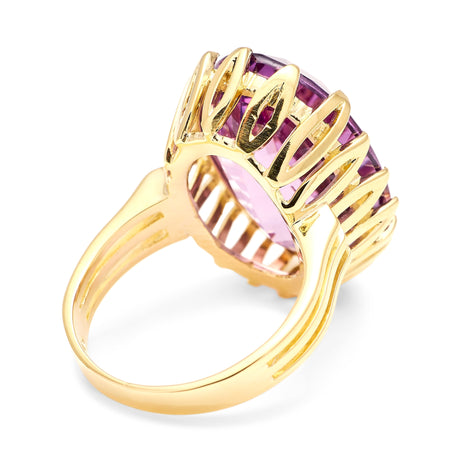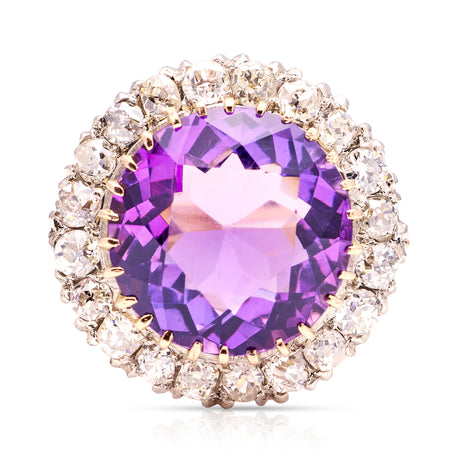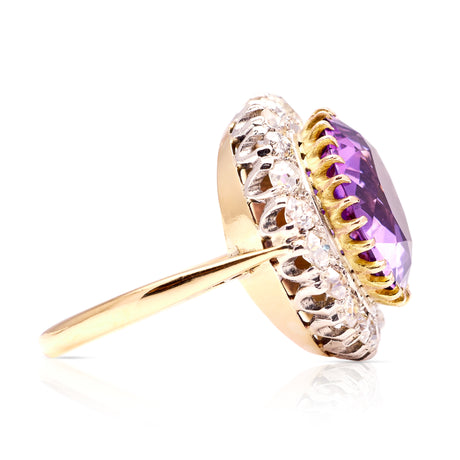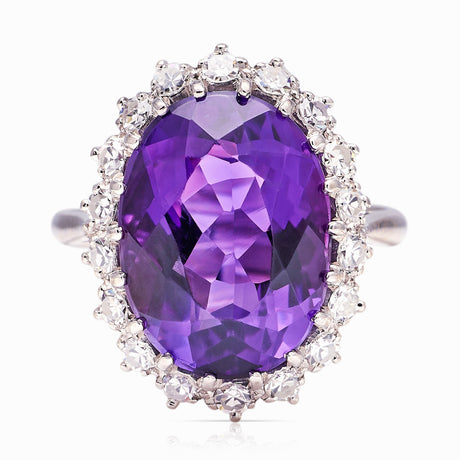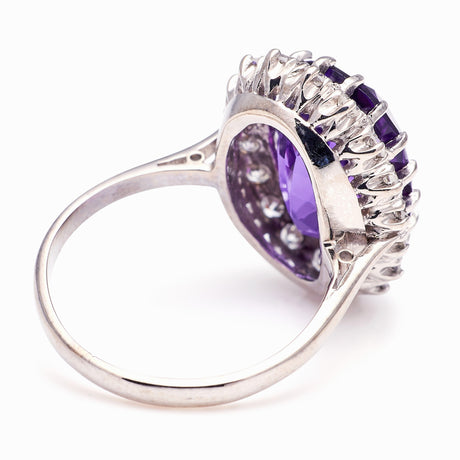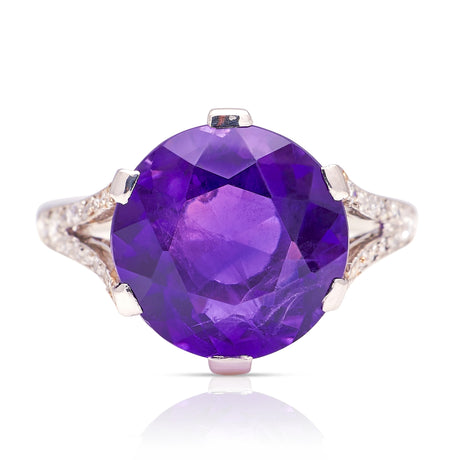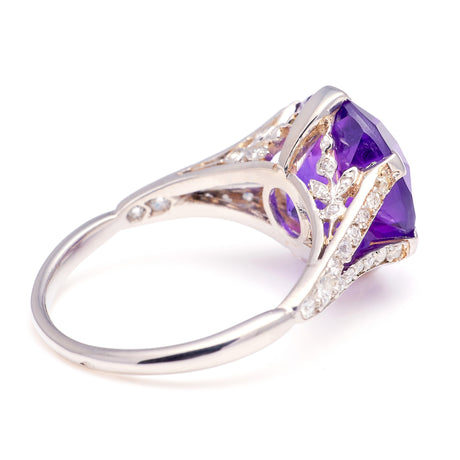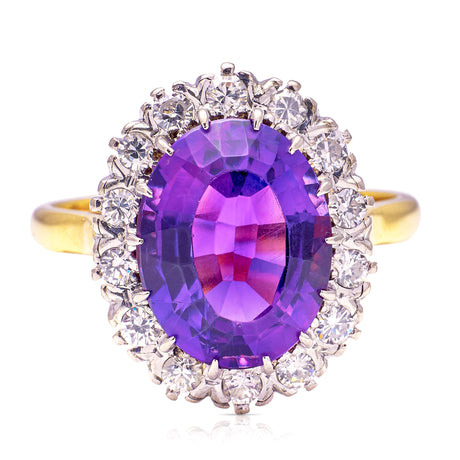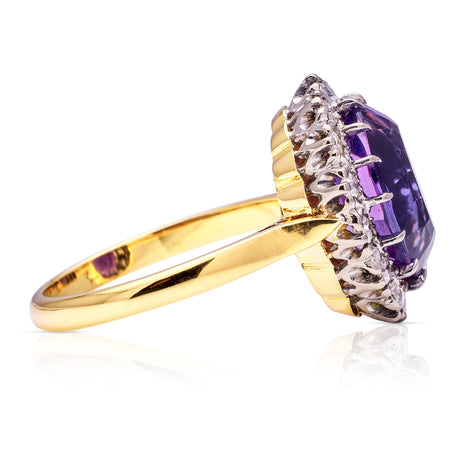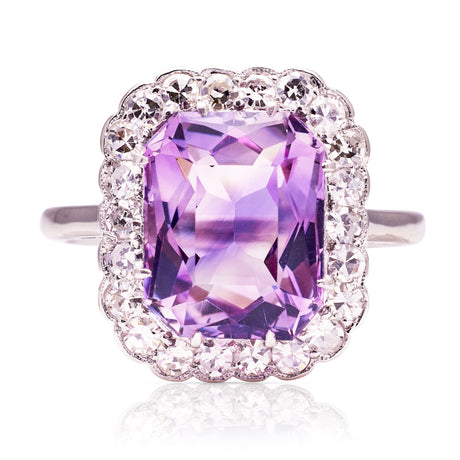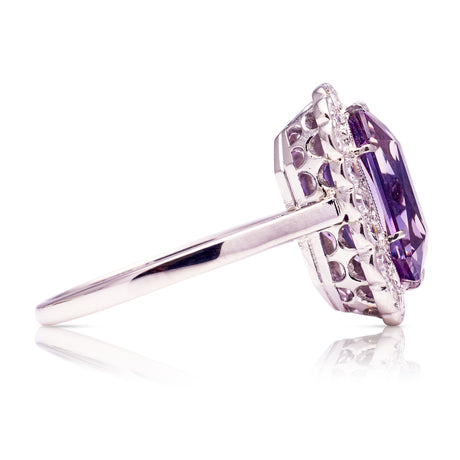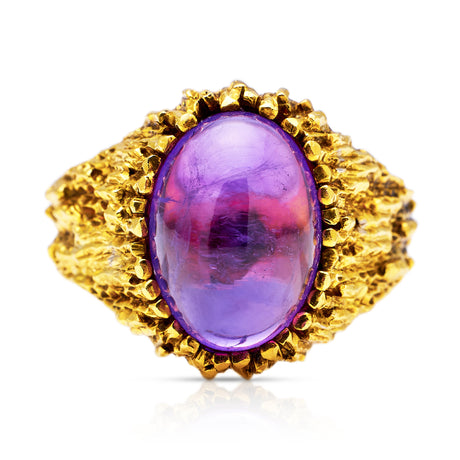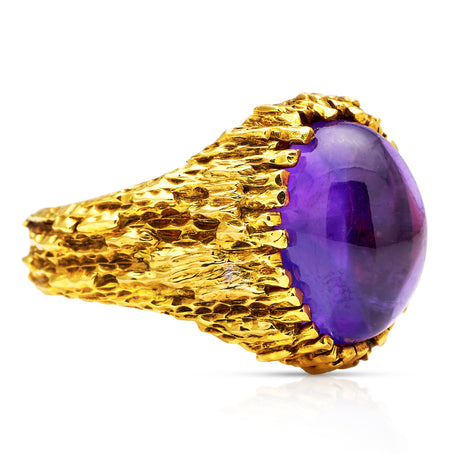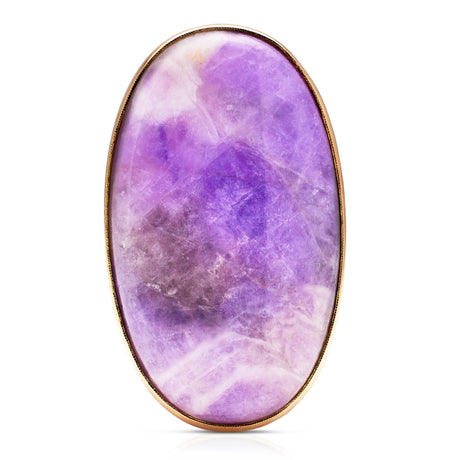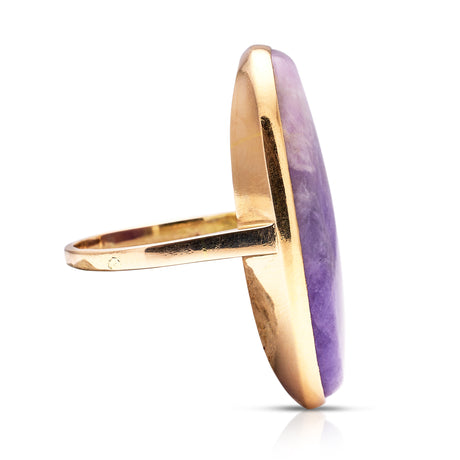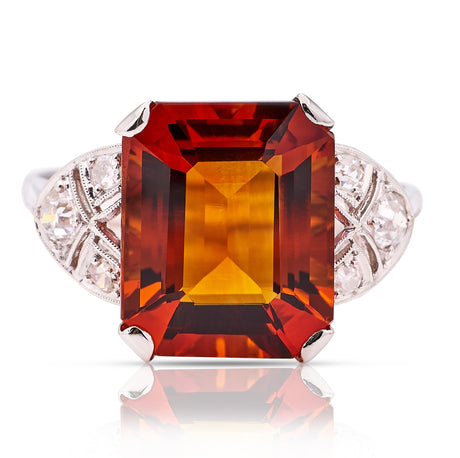Vintage & antique amethyst rings
Amethyst has natural impurities of iron and other metals to thank for its signature violet hue. It's flattered by a cabochon or sliced cut which both make a fantastic exhibition of its mystical hue and internal structure.
Vintage, 1950s amethyst & diamond three-stone ring
$1,540.00Unit price /UnavailableVintage, 1960s amethyst & diamond cluster ring
$2,590.00Unit price /UnavailableVintage, 1970s amethyst & diamond cluster ring
A bright and cheerful ring!
$1,750.00Unit price /UnavailableVintage, Art Deco amethyst & diamond double cluster ring
The detail is so fine and size of this ring is seriously impressive.
$9,100.00Unit price /UnavailableAntique, Edwardian amethyst and diamond cocktail ring
Wow. A striking ring!
$3,500.00Unit price /UnavailableVintage, 1940s amethyst cocktail ring
A really stylish 10ct amethyst cocktail ring, it's good fun to wear!
$1,400.00Unit price /UnavailableAntique, Victorian amethyst and diamond cluster cocktail ring
$8,330.00Unit price /Unavailable-
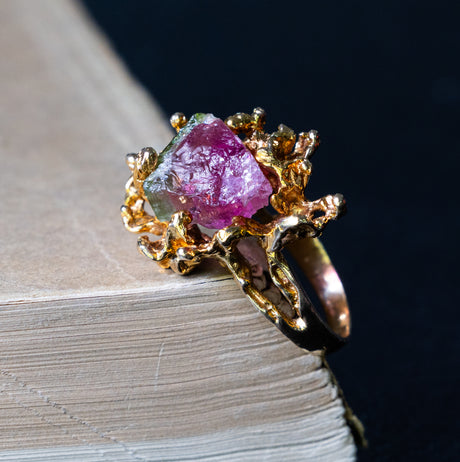 Explore the collection
Explore the collectionUnusual designs
Vintage, 1940s amethyst and diamond cluster ring
$3,500.00Unit price /UnavailableAntique, French Belle Époque, amethyst and diamond ring
A truly spectacular work of art, the diamond set setting is beautiful.
$5,600.00Unit price /UnavailableVintage, 1950s amethyst & diamond cluster ring
$3,500.00Unit price /UnavailableAntique, Belle Époque, amethyst & diamond cluster ring
$6,790.00Unit price /UnavailableVintage Tiffany & co, cabochon amethyst ring, circa 1980
$9,030.00Unit price /UnavailableFrench | powerful, natural amethyst ring
$1,365.00Unit price /Unavailable
Similar rings
Questions about amethyst
